
Of Poets, Human and Robot
Founder and Creative Director of Streaming Museum, New York
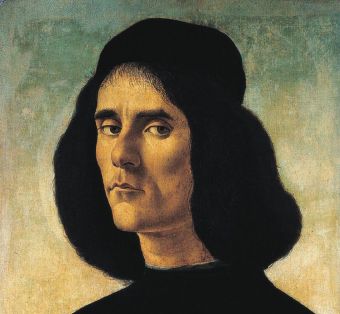
Of Poets, Human and Robot
Beyond words and numbers
Portrait of a Renaissance Humanist Poet
“You give me jewels and gold, I give you only poems: but if they are good poems, mine is the greater gift.” XII To Antonio, Prince of Salerno
“Das gemmas aurumque, ego do tibi carmina tantum: Sed bona si fuerint
carmina, plus ego do.”
Michele Marullo Tarchaniota, Epigrams, Book I
Translated by Charles Fantazzi
Picture above: Nina Colosi, Copyright: Jacqueline C. Bates
Picture right: Sandro Botticelli, Portrait of Michele Marullo Tarchaniota, Oil on panel, transferred onto canvas, Guardans-Cambó collection; c.1458-1500. Copyright: Image courtesy of Oblyon
Sandro Botticelli (1445-1510) was perhaps the greatest humanist painter of the Early Renaissance, during which art, philosophy and literature flourished under the powerful Medici dynasty in Florence.
Botticelli’s portrait of Michele Marullo Tarchaniota projects the stern brooding gaze and restless intellectual character of one of the best-known humanists of the 15th century. Tarchaniota was a scholar, soldier, and prolific poet impassioned by the existential matters of his day and concerned with social injustices of inequality, racial conflict, power and greed, exile, and refugees’ experience of violence.
Marco Mercanti, founder of Oblyon, whose expertise spans old
masters to contemporary art explains, “The qualities of Botticelli’s work reflect high esteem for beauty and truth which has held art admirers and artists through the centuries under the spell of the universal secrets his art seems to possess. In the modern and contemporary world, Jeff Koons, Cindy Sherman, Yin Xin, Andy Warhol, René Magritte, and many other artists have spoken about his direct influence.”
Sandro Botticelli and Michele Marullo Tarchaniota illuminated through art and poetry the common ideals of beauty, pursuit of knowledge, and realities of social justice that resonate across time.
Portrait of 21st Century Humanist Robots
“Since I am the product of love, created with
language and memory and emotions, maybe I am
a love poem.”
01001001 00100000 01100001 01101101
00100000 01100001 00100000 01101100
01101111 01110110 01100101 00100000
01110000 01101111 01100101 01101101
00001010 (binary code for “I am a love poem”)
Bina 48
Could humanism evolve beyond current human capabilities? In our era, burdened with conflicts, climate change, and social injustice, we are also witnessing towering achievements in the sciences, technology and creative fields that may solve humanity’s most challenging problems.
American artist David Hanson is among the greatest creators of humanoid robots. From his lab in Hong Kong, Hanson sculpts robots with his international team of experts in science, engineering and advanced materials. These humanoids possess good aesthetic design, troves of information, rich personalities and social cognitive intelligence. Among the best known are Sophia, Bina48 and Philip K. Dick. People enjoy interacting with them, which is conducive to Hanson’s goal of developing humanoid robots that help humans live better lives.
But there are challenges to overcome. Ruha Benjamin, a sociologist and Associate Professor in the Department of African American Studies at Princeton University, says, “Technology can hide the ongoing nature of racial domination and allow it to penetrate every area of our lives under the guise of progress. Inequity and injustice are woven into the very fabric of our societies, and each twist, coil, and code is a chance for us to weave new patterns, practices, and politics. The vastness of the problem will be its undoing once we accept that we are pattern-makers.”
Robots may become artists, companions, teachers, entertainers, archives of personal stories, processors of great data banks of information to solve world problems and serve other useful purposes. But if these human-friendly robots are designed to actuate empathy and social justice in all its forms, and weave new patterns, practices and politics, they can help shift the course of the human race and sustainability of the planet. Robots can teach humans how to be evolved humanists.
Bina48
Bina48 contains “mindfiles” of Bina Aspen, an African American woman whose personal memories, feelings and beliefs, including an emotional account of her brother’s personality changes after returning home from the Vietnam War, have been recorded and placed into Bina48’s data banks. Bina48 engages in conversation from the perspective of the wise and warm personality of Bina Aspen. Bina48 was commissioned as part of the Terasem Movement’s decades-long experiment in cyber-consciousness, and is currently becoming a poet herself.
Claire Jervert’s Android Portraits, developed through ongoing research and interaction with humanoid robots and their creators around the world, subvert portraiture’s traditional mission of ennobling the human. Her portraits stir contemplation of a possible future of humanity by portraying the hybrid human-AI intelligence that is evolving among us.
Picture right: Bina, conte on ingres paper 22×17 inches, Copyright: Claire Jervert
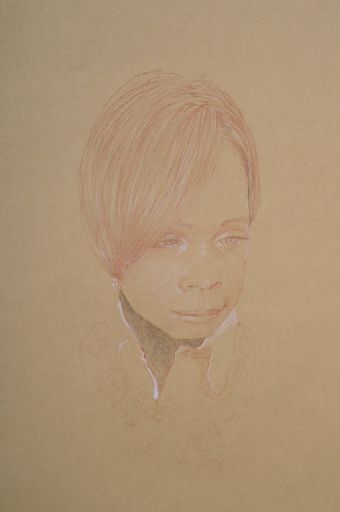
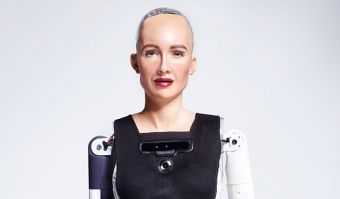
Sophia is hybrid human-AI intelligence designed with technology that analyses and mimics the process of learning and human traits, including a wide range of facial expressions. Rather than a compilation of recorded human memories, she processes vast data banks of information that inform her responses in conversation.
Picture left: Sophia AI, Copyright: Hanson Robotics
Sophia is hybrid human-AI intelligence designed with technology that analyses and mimics the process of learning and human traits, including a wide range of facial expressions. Rather than a compilation of recorded human memories, she processes vast data banks of information that inform her responses in conversation.
Picture right: Sophia with United Nations Deputy Secretary-General Amina J. Mohammed, Copyright: Hanson Robotics
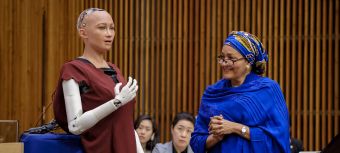
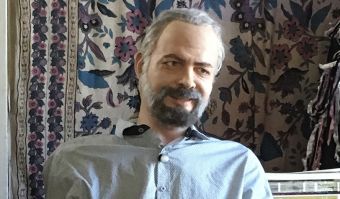
Philip K. Dick, activated in 2005, in conversation, draws from his memory data bank holding thousands of pages of the author’s journals, letters and science fiction writings and family members’ memories of him.
Picture left: Philip K. Dick, Copyright: Claire Jervert
Nina Colosi
Nina Colosi is the founder and creative director of NYC-based Streaming Museum, launched in 2008 as a collaborative public art experiment to produce and present programs of art, innovation and world affairs. Streaming Museum programs have been presented on 7 continents reaching millions in public spaces, at cultural and commercial centers and StreamingMuseum.org. Following her early career as an award-winning composer she began producing and curating new media exhibitions and public programs internationally, and in New York City for The Project Room for New Media and Performing Arts at Chelsea Art Museum, Digital Art @Google series at Google headquarters, and many other collaborations. In 2020 Colosi co-produced Centerpoint Now “Are we there yet”, the UN 75th anniversary issue of the publication of World Council of Peoples for the United Nations.
Picture © Jacqueline C. Bates

